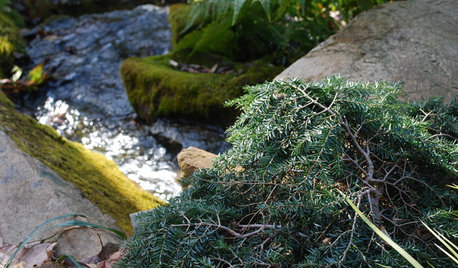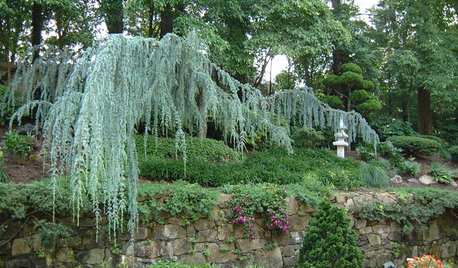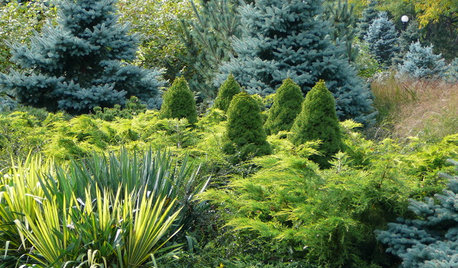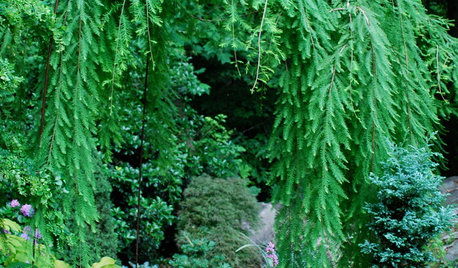Hemlock woolly adelgid in Ohio
Bonnie
10 years ago
Related Stories

GARDENING GUIDESGreat Design Plant: Tsuga Canadensis ‘Bennett’
Bennett Canadian hemlock thrives in shade and provides sculptural interest in eastern U.S. gardens
Full Story
GARDENING GUIDESGreat Design Plant: Cedrus Atlantica ‘Glauca’
With its blue foliage and variety of shapes, blue atlas cedar earns its place in the sun
Full Story
LANDSCAPE DESIGNFlood-Tolerant Native Trees for Soggy Soil
Swampy sites, floodplains, even standing water ... if you've got a soggy landscape, these trees are for you
Full Story
PLANTING IDEASDesigning With Conifers: Layers of Texture for Your Garden
Sharp and prickly or fine like ferns, richly textured conifers bring unexpected interest to the landscape
Full Story
LANDSCAPE DESIGNThe Weepers and the Creepers: 10 Intriguing Trees for Your Garden
Bring something a little different to your landscape with a tree that dives, twists or crawls
Full Story
LANDSCAPE DESIGNDitch the Ordinary Ditch: Create a Realistic Dry Creek Bed
Here’s how to turn your water runoff system into an eye-catching accent for your landscape
Full Story








ken_adrian Adrian MI cold Z5
pineresin
Related Professionals
Windham Landscape Architects & Landscape Designers · Beachwood Landscape Architects & Landscape Designers · Glendora Landscape Architects & Landscape Designers · Allentown Landscape Contractors · Maple Valley Landscape Contractors · Berkley Landscape Contractors · Danvers Landscape Contractors · Deerfield Beach Landscape Contractors · Duarte Landscape Contractors · La Mirada Landscape Contractors · Laguna Hills Landscape Contractors · Los Banos Landscape Contractors · Melrose Park Landscape Contractors · Old Saybrook Landscape Contractors · Thornton Landscape ContractorsBonnieOriginal Author
buckeye15
BonnieOriginal Author
davidrt28 (zone 7)
davidrt28 (zone 7)
bengz6westmd
nikkie_in_toronto
buckeye15
BonnieOriginal Author
bengz6westmd